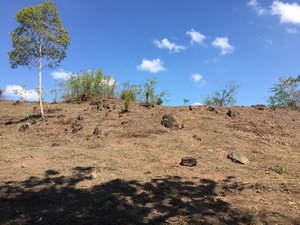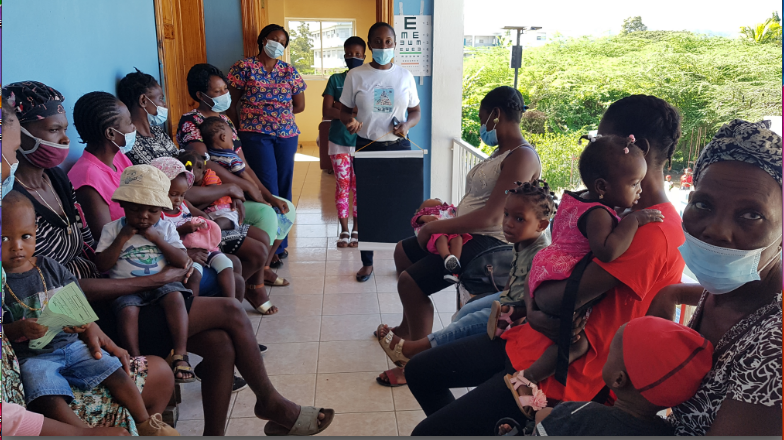May 28th was World Hunger Day, June 5th was World Environment Day and June was Fresh Fruit and Vegetable Month. Wow - these all are such critical and interrelated topics for Haiti and for the programs we support! One thing I love about Bethlehem Ministry is how the programs complement and strengthen one another, each leveraging its particular strengths to address problems - in this case, malnutrition, food security, and care for the land (which in Haiti goes hand in hand with food security). Through the programs, we address food insecurity and malnutrition in a multi-pronged effort. The efforts include both a focus on acute immediate needs and also on longer term proactive efforts.
Sadly, Haiti is one of the most food-insecure countries in the world. According to a March 2024 World Food Programme update, “As violence, soaring inflation and poor harvests collide, Haiti finds itself with the worst levels of food insecurity on record.” Nearly five million people - almost half of the country’s population – are now facing acute food insecurity and struggling to feed themselves.
Sources:
One of the reasons that Haiti has this level of food insecurity is the disastrous combination of massive deforestation, highly mountainous terrain and tropical weather. One striking visual marker of this is the stark difference at the border, highlighted in yellow, between Haiti (brown!) and the Dominican Republic (green!) as seen on the satellite map below.

The efforts of Jatrofa Projenou are directly aimed at helping farmers, healing the land and helping Haiti feed itself. This is the kind of challenge JP faces:
Here is JP at work addressing this issue - growing trees and plants to distribute and sending its agronomists to help local farmers cultivate trees and crops together:
Reforestation and agroforestry are longer-term solutions to the massive environmental and food security challenges of Haiti. What about the immediate needs? Well both JP and Espérance et Vie have farmland near Terrier Rouge and are growing food for the community to meet that acute need. In fact, Jatrofa Projenou just converted land to a truck garden earlier this year to meet the rising need. The JP truck garden is currently growing peppers and tomatoes (pictured), as well as plantains and papayas. Espérance et Vie's farm, which supplies the school, is currently growing okra, cassava, limes and squash (all pictured), well as papayas, coconuts and black beans! In addition, Espérance et Vie provides financial and in-kind aid to local families struggling to meet basic needs.
Some of the produce pictured above is headed for St. Barthélémy school, where the school plays a critical role in preventing malnutrition and food insecurity in the community. The most visible sign of this is the lunch program. If you've followed us for long, you have seen a picture or two of kiddos eating lunch! This matters so much since for many kids this will be the most substantial and nutritious meal of the day.
The kids at the school also learn about nutrition! One of the fun and engaging ways that kids at St. Barthélémy learn is by celebrating Haitian National Labor AND Agriculture Day on May 1st. In 2023, in honor of this holiday the school did a parade through Terrier Rouge themed as "The Day of Fruits and Vegetables."
And the education about nutrition doesn't stop at the school! One mission of
Clinique Espérance et Vie is educating the community about nutrition and health. The moms and kids below are learning about good nutrition from Clinic staff. The Clinic also monitors patients for malnutrition and provides assistance if detected.
From growing and distributing food and monitoring malnutrition in order to address acute needs, to supporting longer term solutions such as agroforestry and education about nutrition, AND MORE, the programs, together, represent a full "toolbox." And like the tools in a good tool box, they each have a special role to play and sometimes work better in tandem with another tool. This is why we describe the programs as being STRONGER TOGETHER!

Of course none of this is possible without the support of donors! You can donate online at https://secure.etransfer.com/eft/custom/bethlehemMinistry/flexblockcode/donation1.cfm?d2org=BethlehemMinistry&d2tool=HopeandLife or by mailing a check to us at PO Box 48387, Athens GA 30603.













































